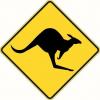Hi everyone! I am in the market for my first Spokeshave and I wanted to know if someone can explain the difference between the flat and the round/concave bottom shaves (besides the obvious, of course. lol) and the applications for each? Which one might be a better choice for my first spokeshave? Thanks again for any help you can give!




 Reply With Quote
Reply With Quote




 It's also less likely to disembowel you, unlike a draw knife, when you get overzealous and into the work. :P
It's also less likely to disembowel you, unlike a draw knife, when you get overzealous and into the work. :P
